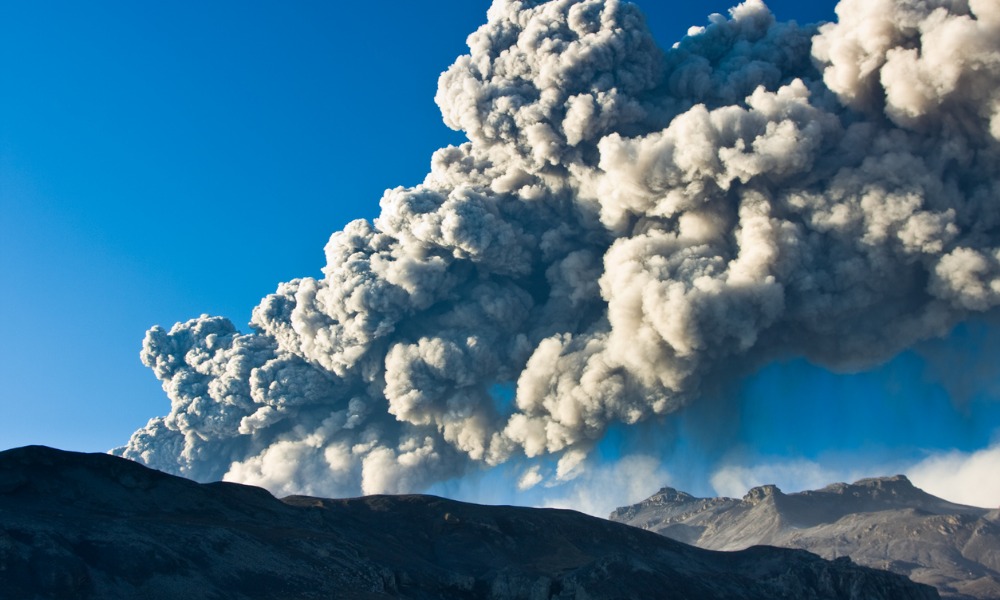New Zealand prepares for volcanic ashfall with new damage model

New Zealand prepares for volcanic ashfall with new damage model | Insurance Business New Zealand
Catastrophe & Flood
New Zealand prepares for volcanic ashfall with new damage model
Research project conducted as Kiwis remain unclear about insurance coverage
Catastrophe & Flood
By
Roxanne Libatique
A new research initiative funded by the Natural Hazards Commission (NHC) is set to improve New Zealand’s ability to assess and respond to volcanic ashfall damage.
The research, led by Dr Josh Hayes, a natural hazard and risk scientist at GNS Science, focuses on developing a New Zealand-specific damage forecasting model for volcanic eruptions.
Commenting on the research’s findings, Hayes emphasised that a volcanic eruption could affect thousands of buildings around North Island, so the country needs a new model that provides a quick assessment of the scale of the damage.
He noted that New Zealand has not seen a significant ashfall event since the eruptions of Mt Ruapehu in the mid-1990s, and those incidents caused minimal damage. Due to this limited local experience, much of the country’s understanding of ashfall damage has been based on overseas models.
New Zealand-specific damage forecasting model for volcanic eruptions
The goal of this new project is to build a tool that incorporates New Zealand-specific data and conditions to enhance the country’s disaster response capabilities.
Hayes explained that inspecting ashfall damage over large areas can be time-consuming, especially in widespread events. The new model, which will be updated with fresh data during an eruption, aims to streamline the process.
“We will use existing overseas damage forecasting models, but will calibrate those models with specific New Zealand data rapidly following an eruption,” he said.
The research is being carried out in collaboration with GNS Science, the University of Canterbury, and Nanyang Technological University in Singapore.
The model, expected to be completed by 2025, will use data from a variety of sources, including satellite imagery, engineering reports, and social media posts. This integration of data will help form a comprehensive picture of damage following an eruption.
According to NHC head of research Dr Natalie Balfour, the project builds on earlier NHC efforts to predict the impact of volcanic ash on homes and forecast ashfall distribution using weather data.
“Knowing where the ash will travel and forecasting the amount of ashfall loading that accumulates on roofs in different areas will be the key metric when we assess the damage to buildings from volcanic ash,” she said.
The survey revealed that only 33% of insured homeowners felt confident about their coverage for home damage, and just 26% understood the extent of their coverage for land damage.
Tina Mitchell, chief executive of the NHC, noted that many homeowners may be underprepared for dealing with natural disasters.
The NHC, formerly known as the Earthquake Commission (EQC), provides financial assistance for damage caused by natural disasters to insured residential properties and some land. This assistance is funded by a levy on home insurance policies and covers up to $300,000 for home repairs. However, land coverage is more limited and subject to specific conditions.
Mitchell emphasised that homeowners need to understand these limitations and review their policies regularly. She also advised homeowners to inspect key areas like retaining walls and nearby waterways that could contribute to flood risks.
NHC’s Know Your Cover campaign
To raise awareness, the NHC has launched its “Know Your Cover” campaign, encouraging homeowners to better understand their insurance coverage and take steps to mitigate the impact of natural disasters.
The campaign suggests homeowners review their insurance regularly, be aware of which parts of their land may not be covered, and consult professionals for advice on minimising risks. Planning ahead for post-disaster scenarios is also emphasized, as insurance claims and rebuilding can take time.
Mitchell also advised homeowners to reach out to their insurers promptly after a disaster to start the claims process.
Related Stories
Keep up with the latest news and events
Join our mailing list, it’s free!






